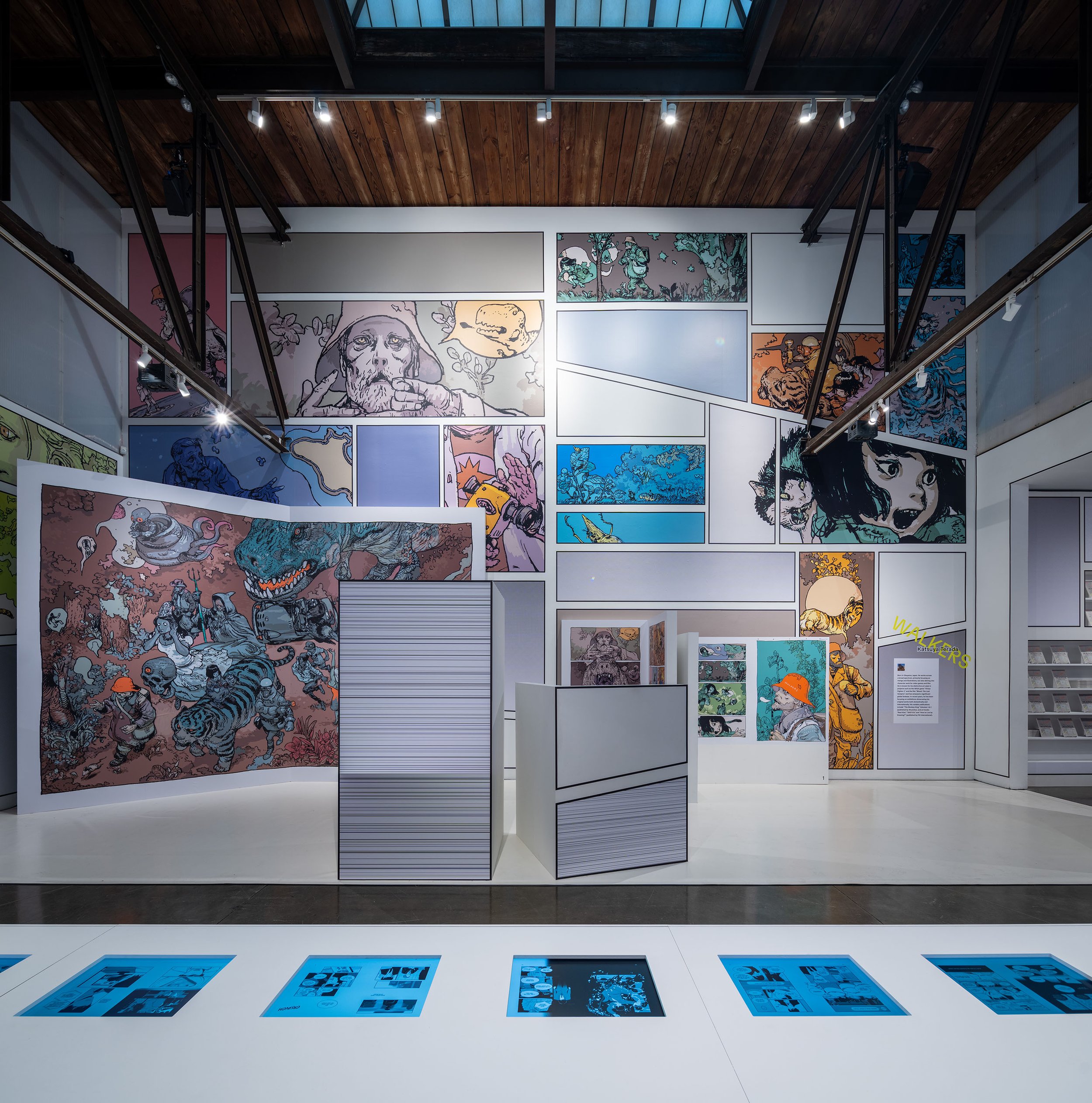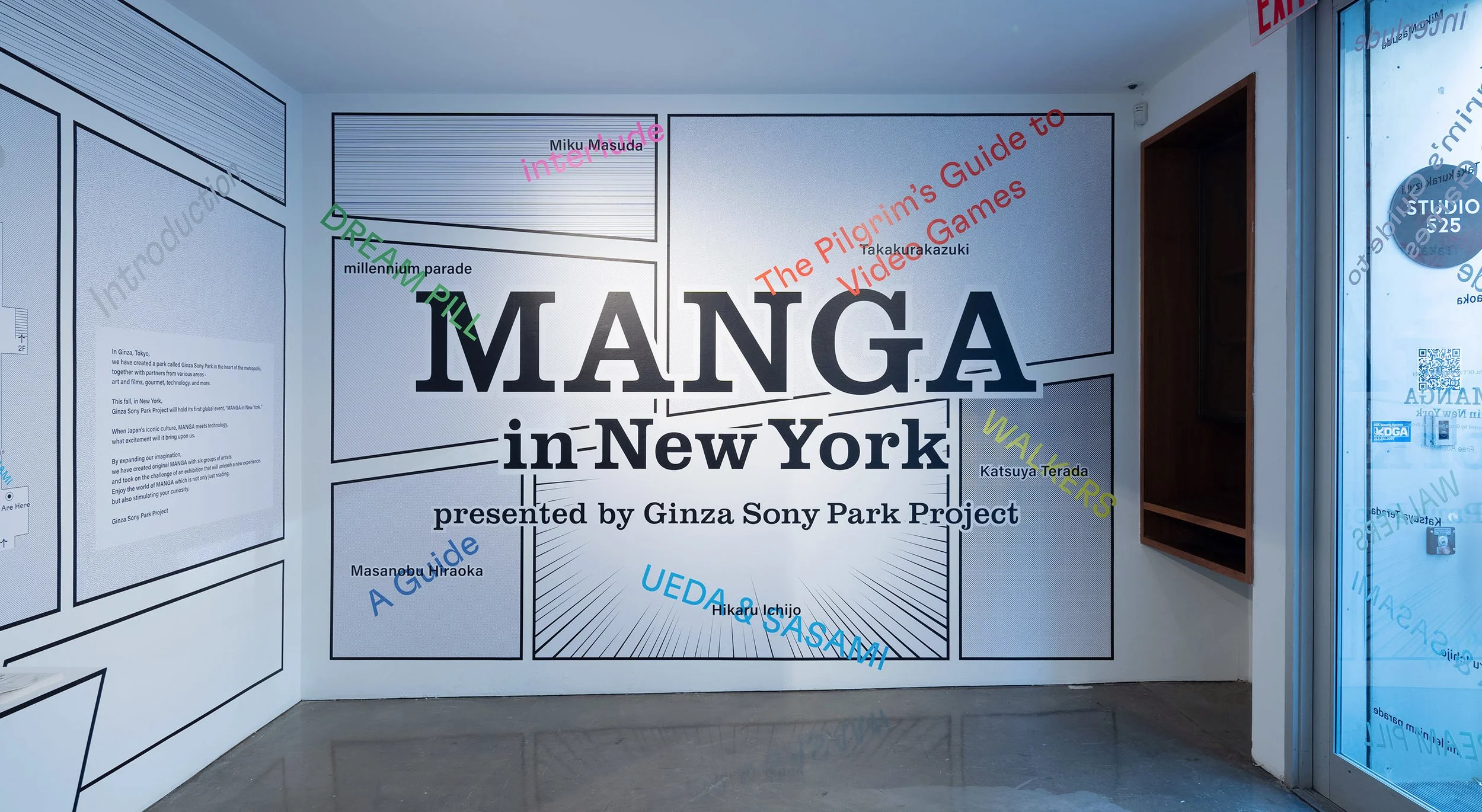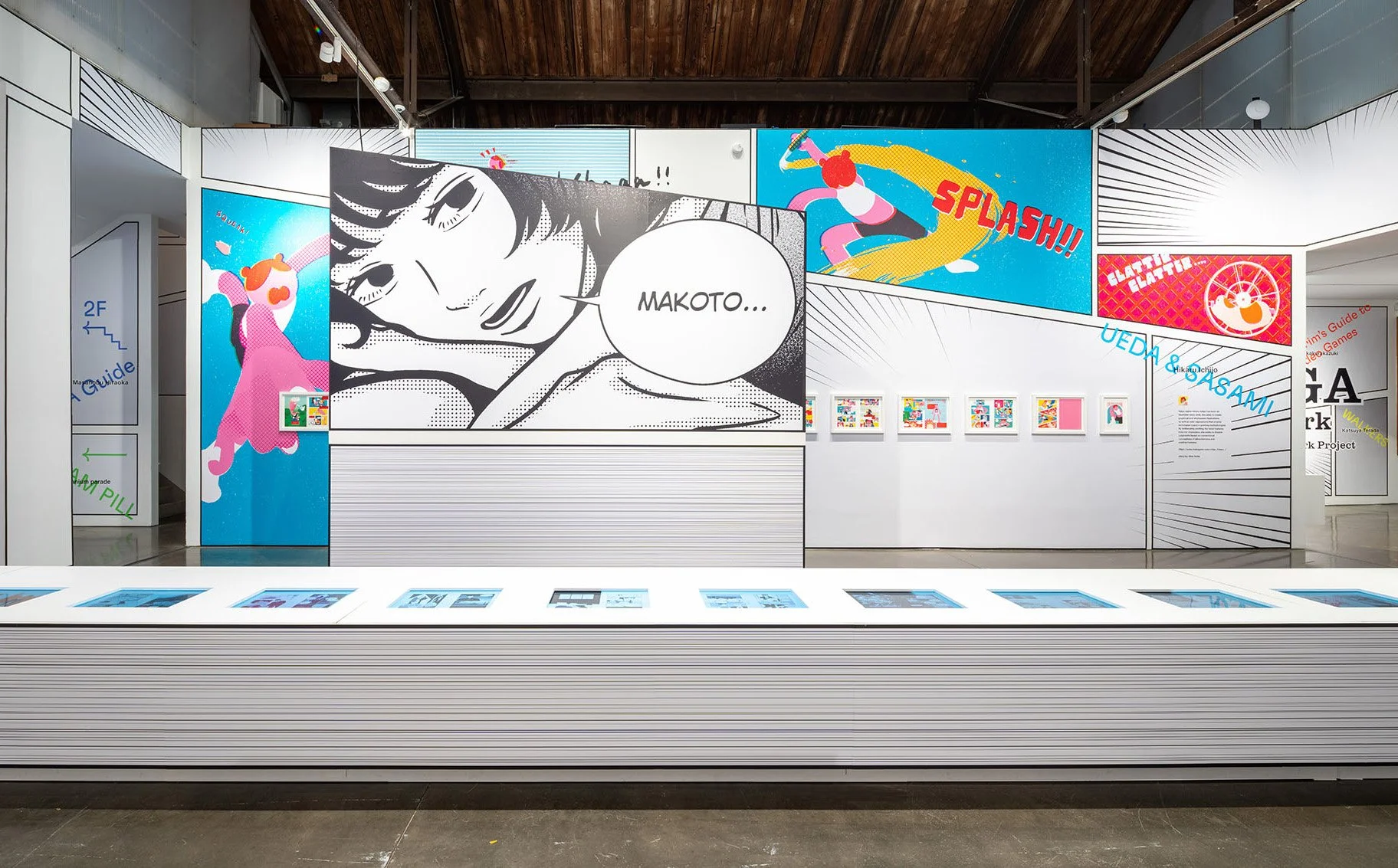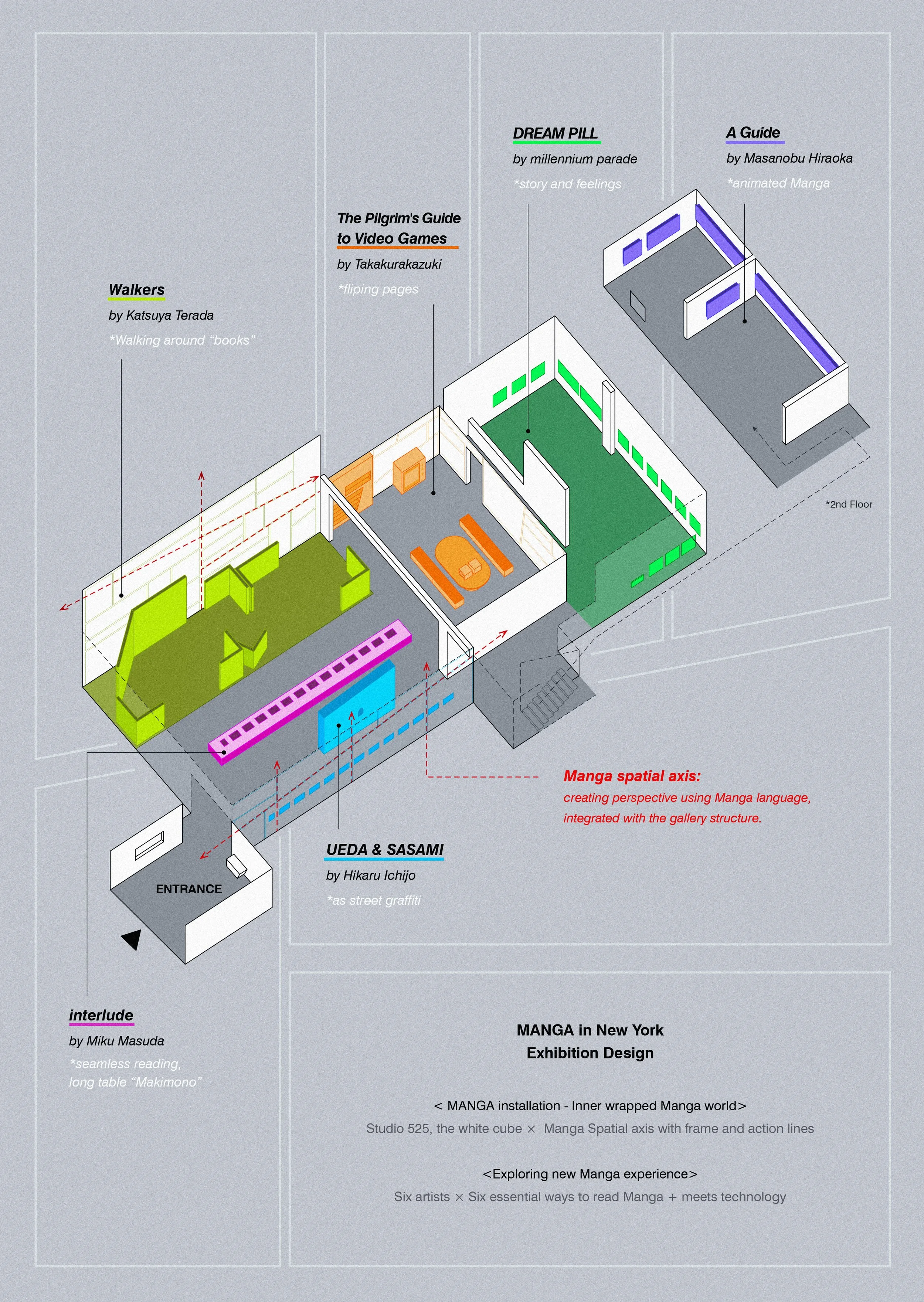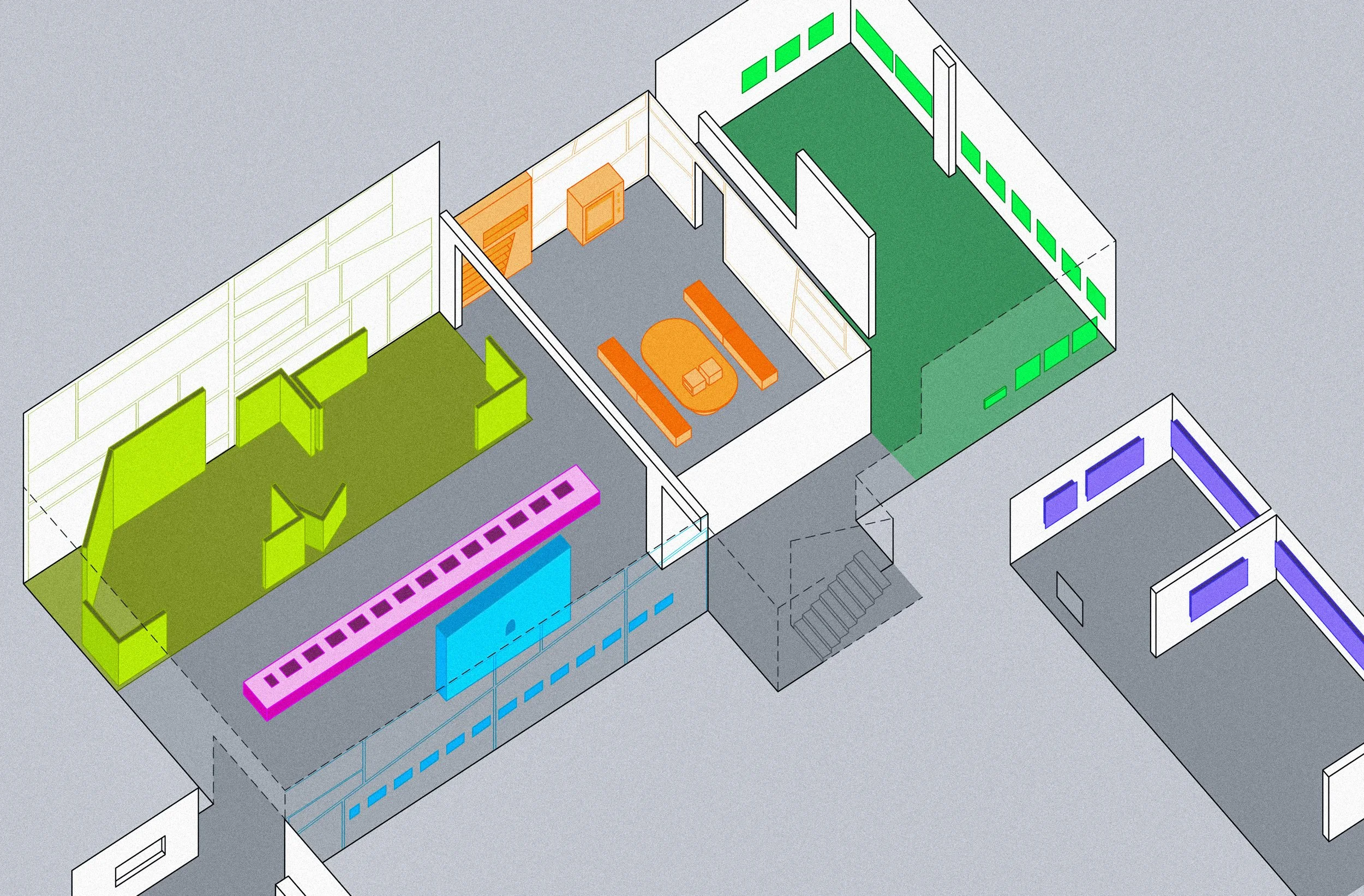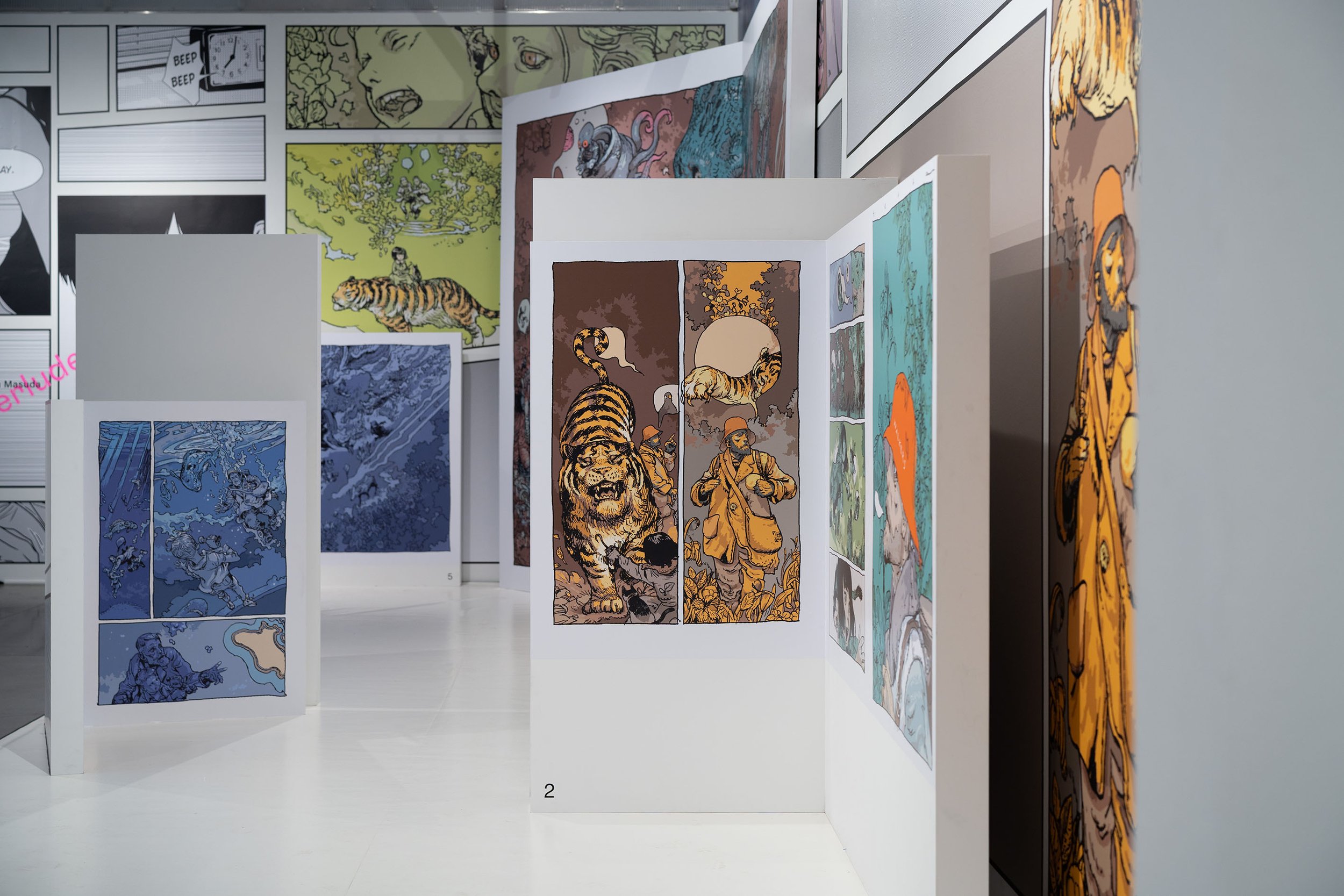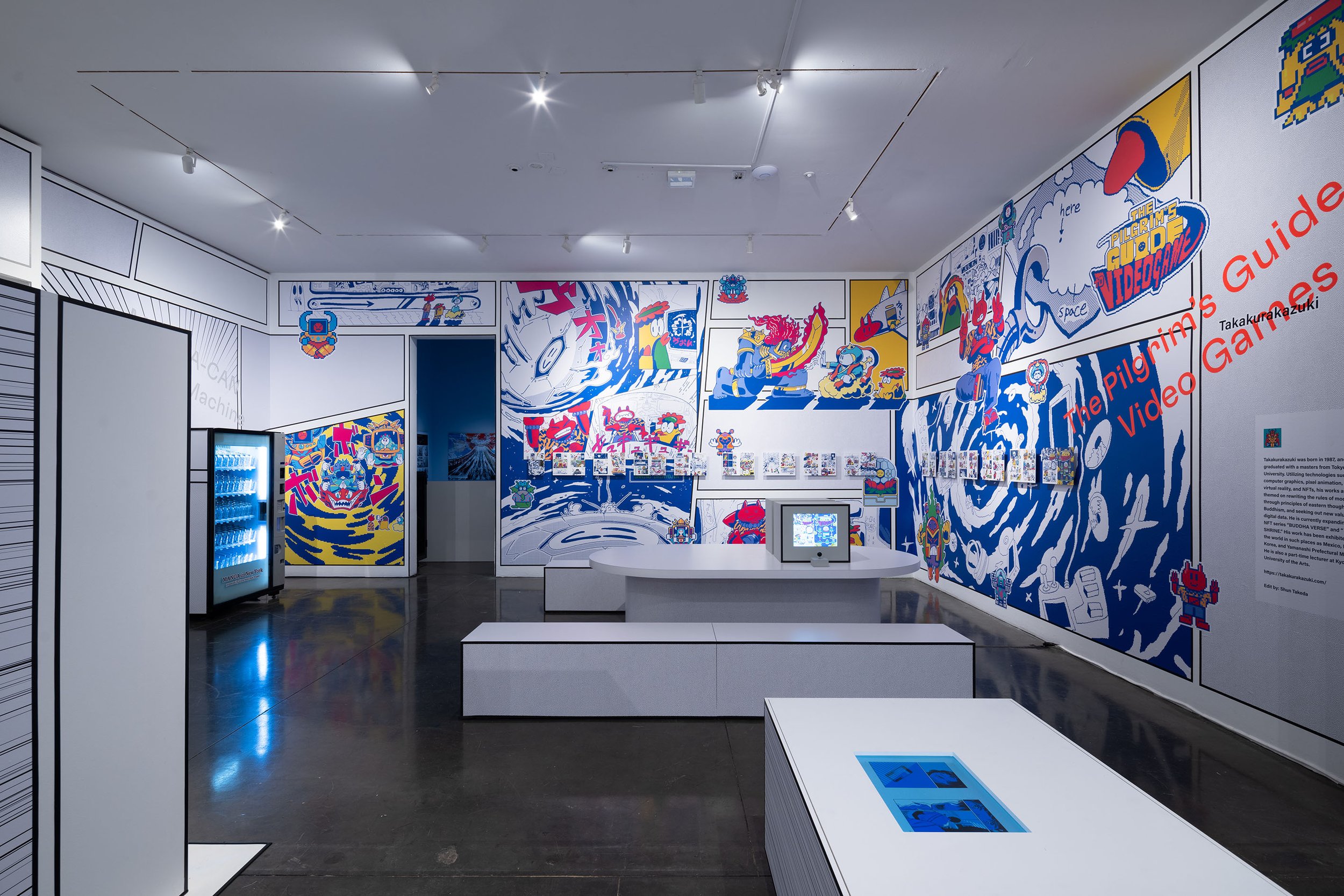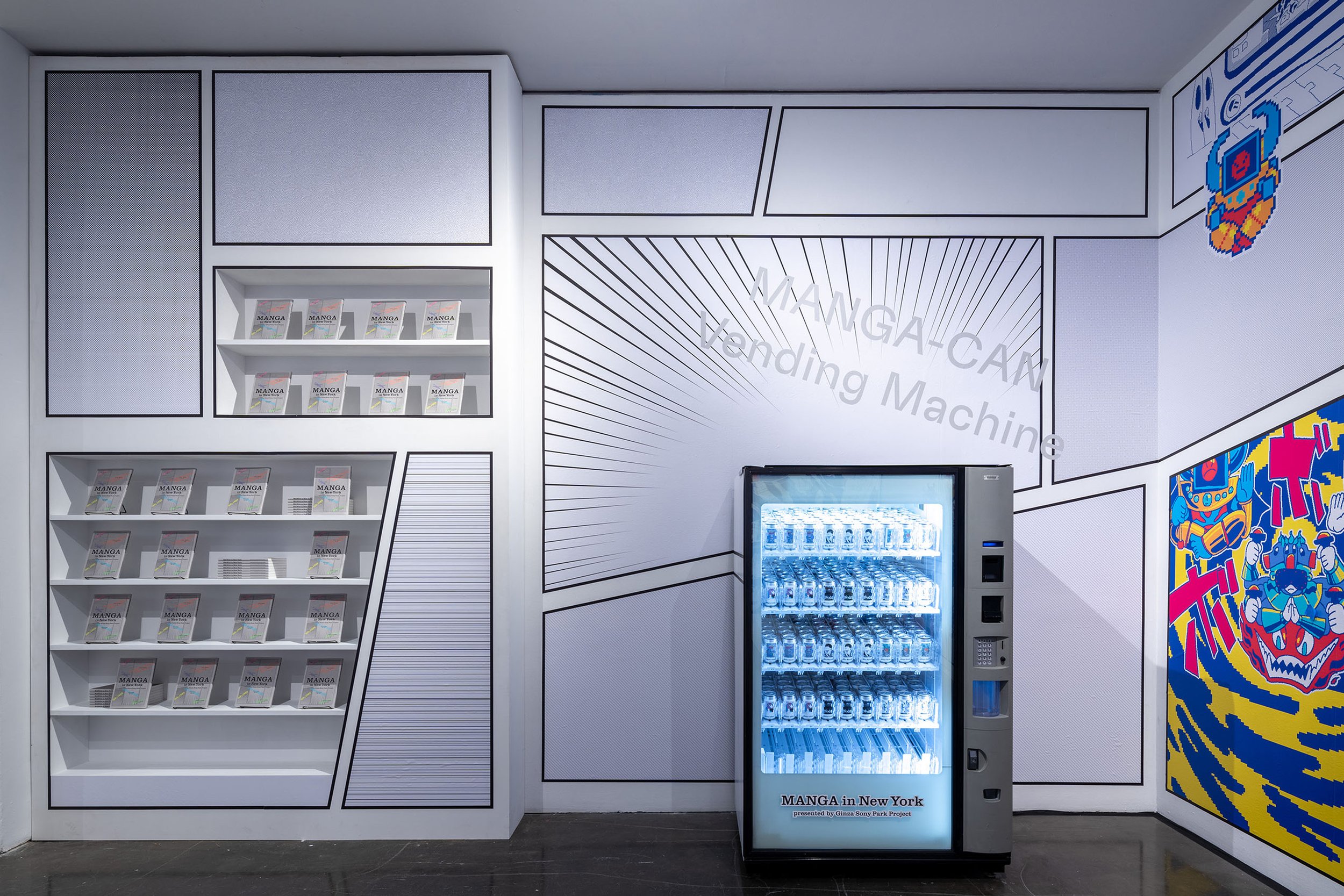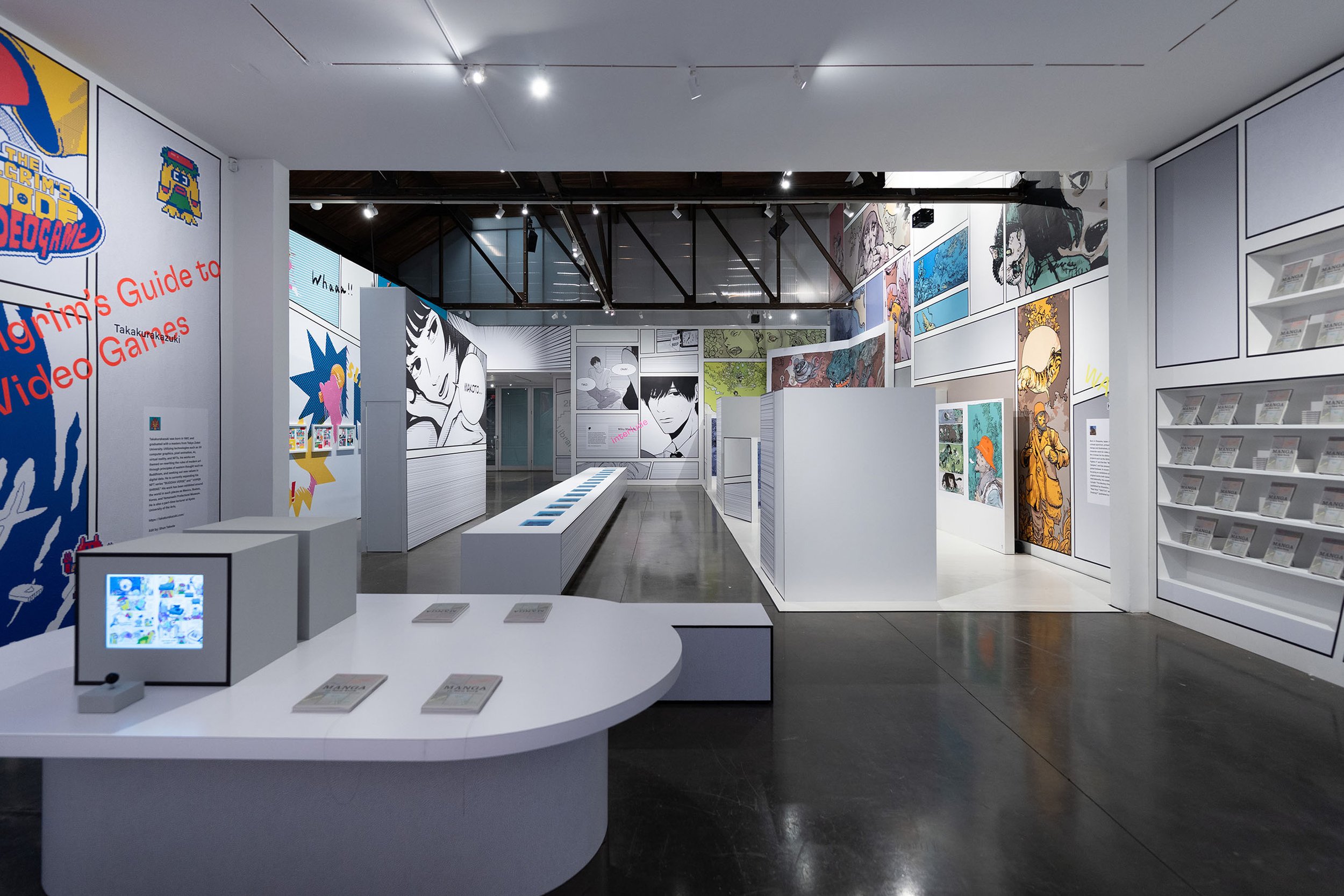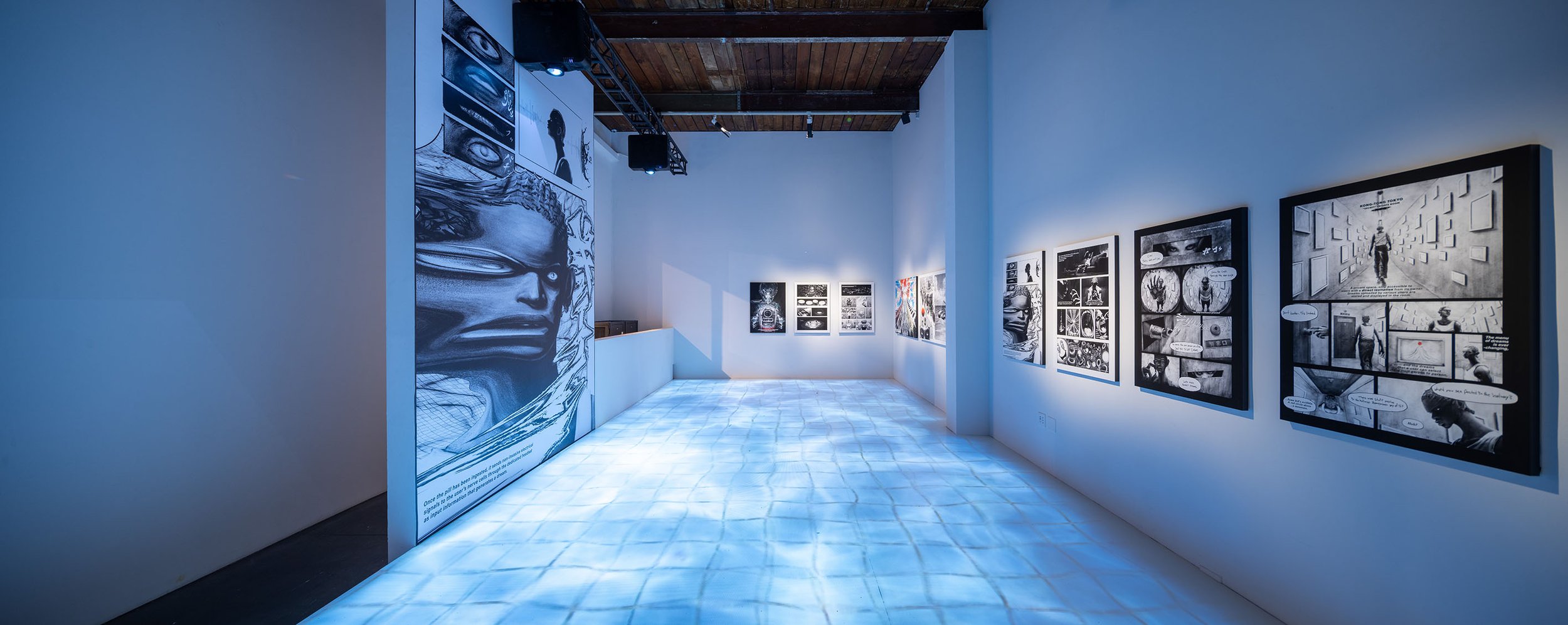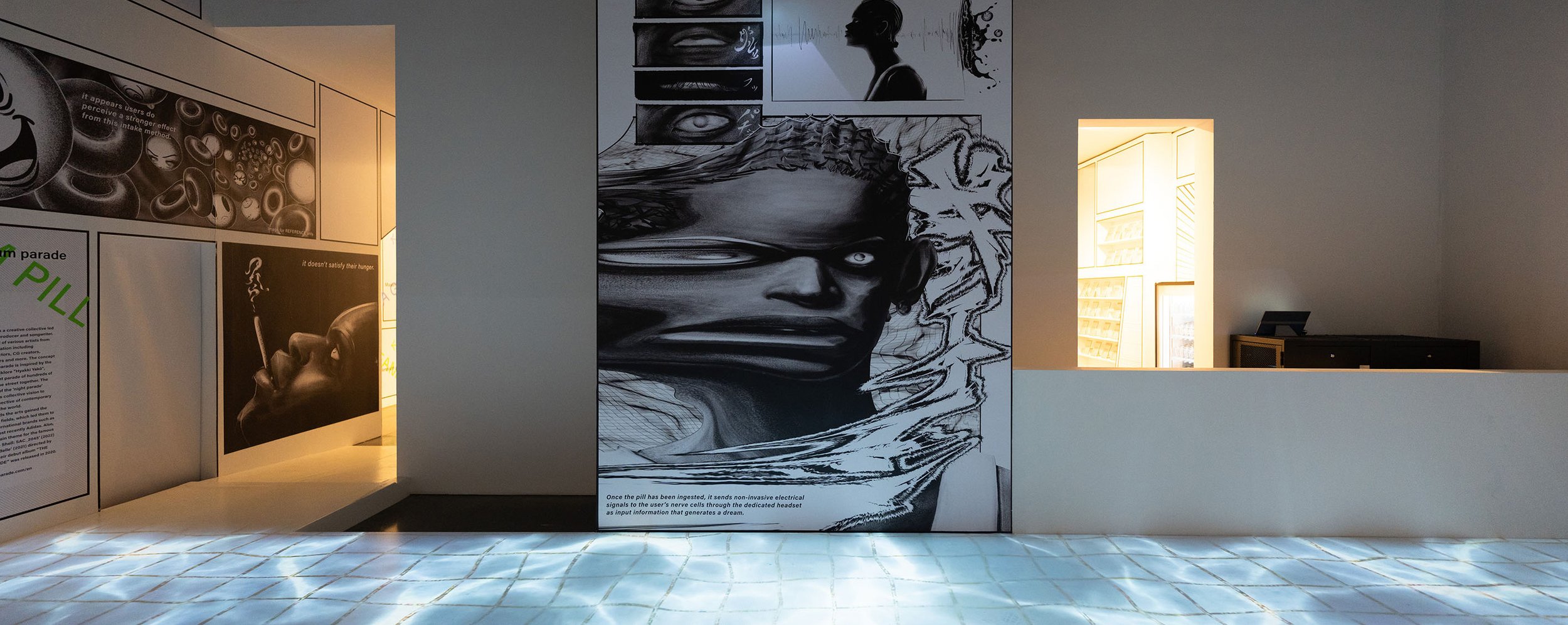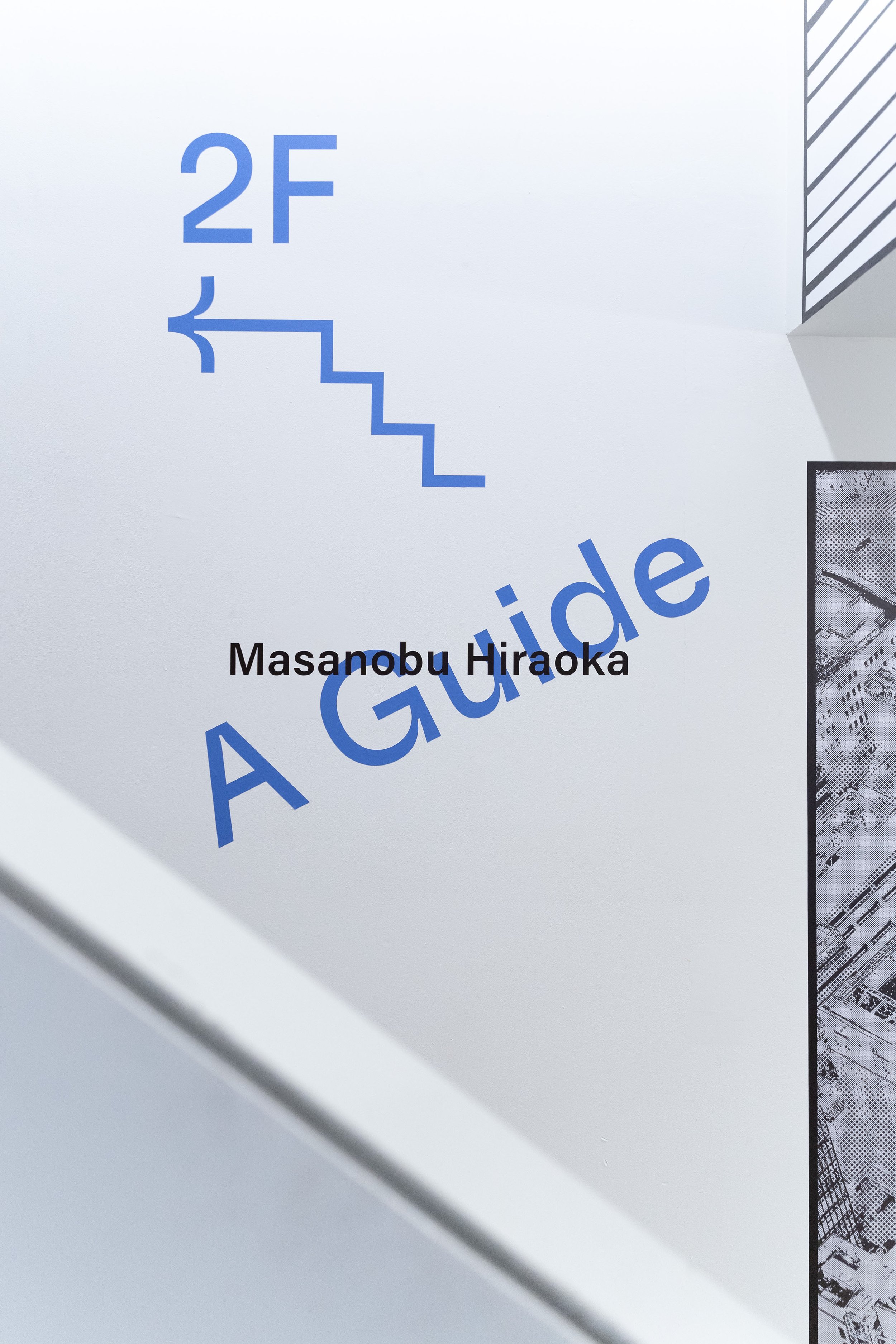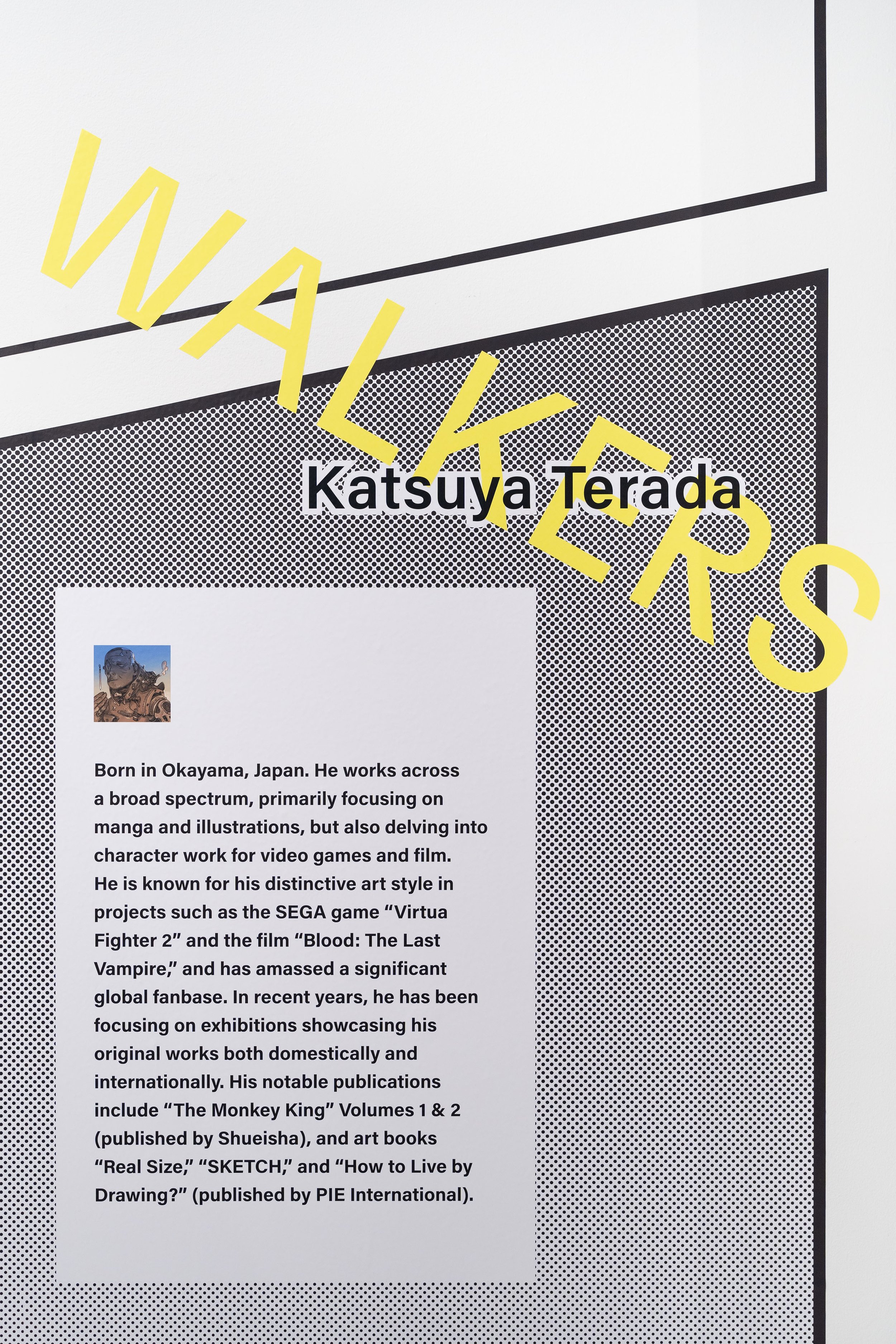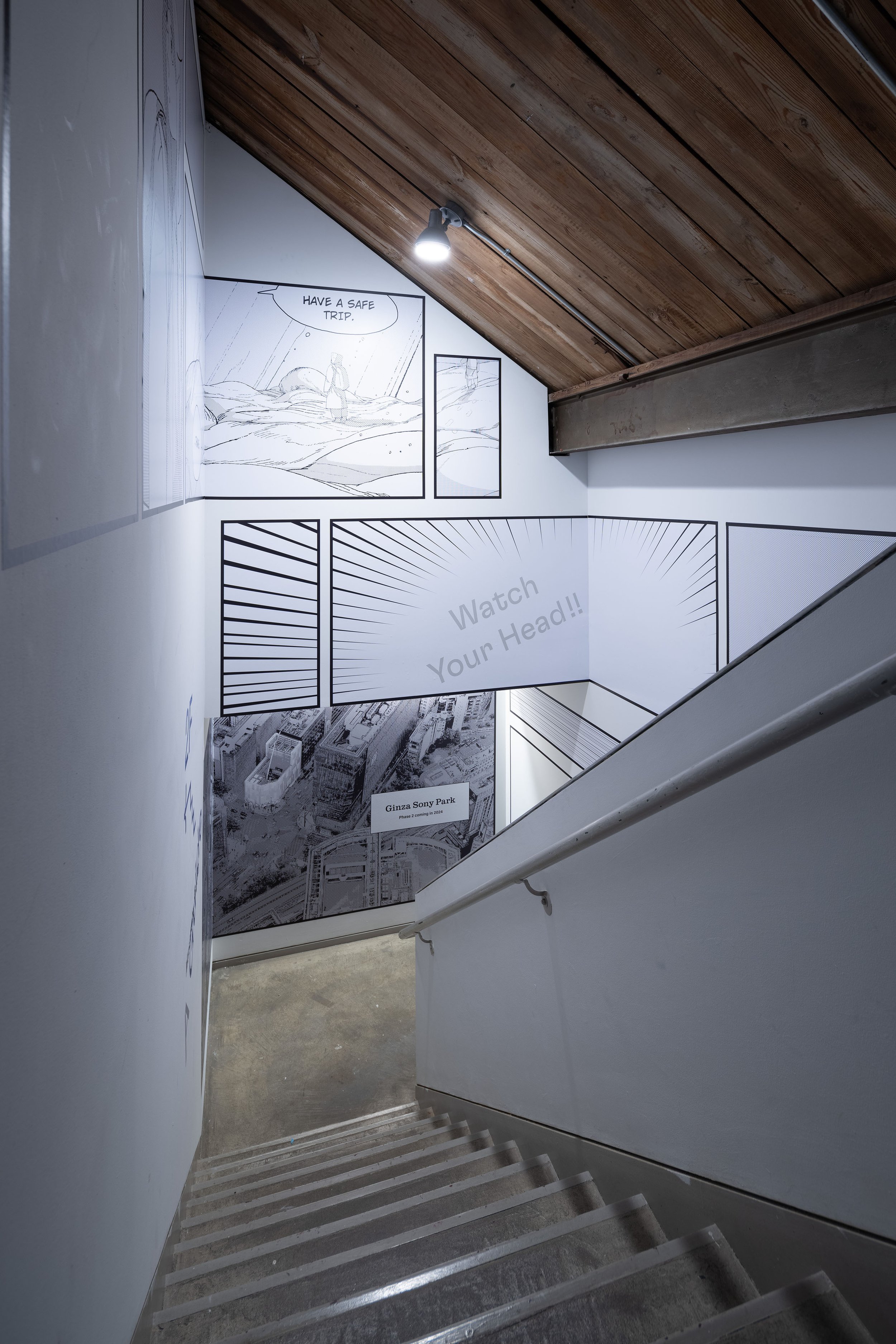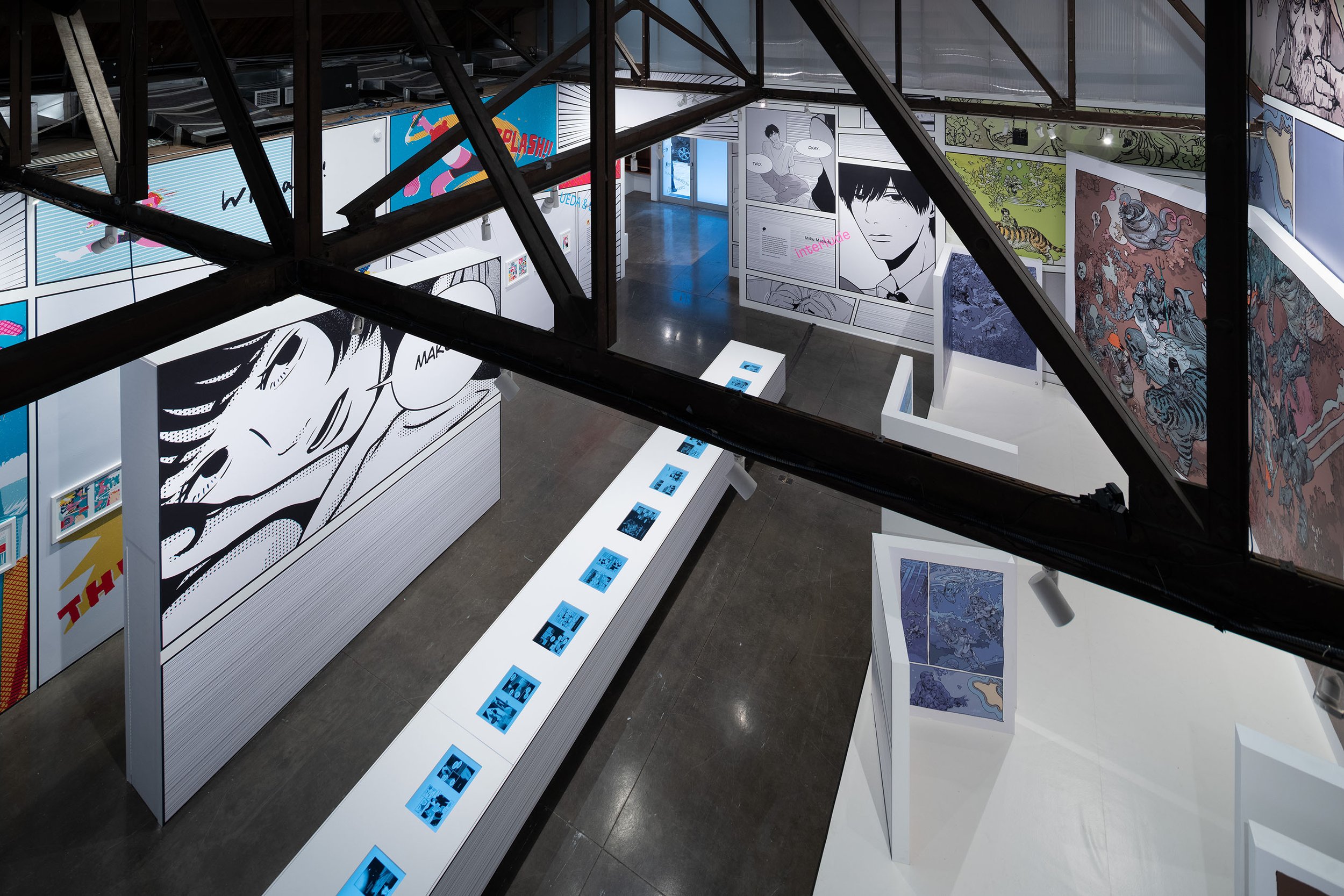MANGA in New York
presented by Ginza Sony Park Project
Oct 27 - Nov 5, 2023
https://www.sonypark.com/e/ginza/mangainnewyork/
Venue: Studio 525, 525 W 24th St, New York
Exhibition Period: 2023.10.27 -11.5
Exhibition presented by: Ginza Sony Park Project
Project direction: Sony PCL Inc.
Exhibition design: Mariko Abe + Takashi Nakahara
Graphic Design: Irobe Design Institute
Yoshiaki Irobe, Yasuhiro Yasuda
Construction: Nomura Co., Ltd.
*Exhibition Photography: Ginza Sony Park Project*Drawings and text on this website: Mariko Abe
2023年秋、ニューヨーク・チェルシーの会場にて、
Ginza Sony Park Projectとして初となるグローバルイベントが開催された。
銀座・京都でのSony Park展と同様のプロジェクトメンバーと共に、会場構成・デザインを担当した。
「MANGA in New York」と名付けられたこの展覧会は、日本を代表するカルチャー"MANGA"をテーマとしたオリジナルの空間体験を目指した。それに加え、展示手法やテクノロジーを組み合わせ、体験者にとっての”読むこと”の広がりに挑戦したプロジェクトでもある。
マンガ的な空間とは何だろうか。
コマ割り・効果線・オノマトペ・輪郭線・吹き出し・余白・縦横比・書店・立ち読み・・・と、多々の議論とテストを重ねた。会場のStudio 525のホワイトキューブは白いキャンバスだ。会場の白い壁面はそのまま見せ、壁の輪郭や軸線に黒い線を入れ、それと漫画のコマを融合させていった。塗装の壁の上にカットアウトした黒い線、ベタ塗りのイラストレーション、文字を貼り重ねた製作方法により、2次元の面の中にも質感のレイヤーを感じることができる。更に、作家ごとに割り当てたスクリーントーンを、方向性や角の協調など、ゾーニングだけでない効果として使っていく。グラフィックの視覚効果と、高さ長さの強調された空間造作が絡み合い、ダイナミックなManga Worldに入り込むスケール感をつくりだす。
展示作品は、本展のためにソニーが6組のアーティストと共に創り上げた、6つのMANGAとなっている。
漫画家だけでなく、アニメーターやイラストレーターが漫画の枠組みに取り組んだ作品達は、展示構成にバリエーションとヒントを与えた。
一乗ひかるの作品は、ストリート・グラフィティのように通路の壁面で眺めることができるのに対し、
ますだみくの作品は、一連のストーリーとその時間を横並びで辿る、巻物の見せ方とした。寺田克也のエリアでは、大きな本の間を散策する中で、絵と瞬間的に対面していく。たかくらかずきの作品は、一人や皆でページを捲りながら楽しむ、漫画的コミュニケーションの場となり、millenium paradeのエリアでは、主人公の感覚を床面から触覚で感じることができるテクノロジー(Haptics)が臨場感を演出する。2Fに展示された平岡政展のエリアでは、コマの一部がアニメ化(animate)されることで、シンプルで静かなストーリーが、文字通り生き生きとした奥行きと共に見えてくる。
空間・グラフィック・テクノロジー・作品の枠組みを超えた密度の高い展示が出来上がり、会期中は子供から大人、犬、国籍問わず、自由に体験し、過ごす姿が印象的だった。
MANGAという形式が寛容で自由であることこそが、それぞれの来場者・製作者にとっての新しい体験を与えてくれたように思う。
Ginza Sony Park Project presented its first global event at Chelsea, New York, in the fall of 2023.
Mariko Abe was responsible for the exhibition layout and spatial design for this New York venue along with the same project team as the former series in Tokyo and Kyoto.
The exhibition, named "MANGA in New York," was a project to create a unique installation inspired by MANGA, one of the representative cultures of Japan. It also was a challenge to provide new types of reading experiences combined with multiple techniques and technologies.
What is a MANGA-like space in general?
Does everyone imagine it by comic frames, motion lines, speech balloons, onomatopoeia sound words, columns and margins, bookstores, or reading on the subway?
The venue, Studio 525, is a white cube like a blank paper. Over the existing white surface, we pasted black lines along the spatial outlines, which metaphorically acted as the Manga frame. This production process of overlaying lines, illustrations, and texts added textures to the two-dimensional design.
In addition, the motion pattern affected the perspective and the zoning. The visual effects of the directional graphics and spatial layout worked together to create a dynamic scale that brings you into the Manga World.
The main exhibits were six original MANGA by Sony, which collaborated with six groups of Japanese artists, including Manga artists, animators, illustrators, and so on.
While Hikaru Ichijo's works were posted along the passage walls like street graffiti, Miku Masuda's pages are precisely laid in the form of linear scrolls, tracing stories and their timescale.
Katsuya Terada's area was designed with large books standing like a forest, allowing you to find paintings individually. A fun and relaxing moment designed for Takakurakazuki's area, you can turn the pages on a screen like a video game, alone or together. For the millennium parade area, we applied Haptics technology that allows you to feel the characters' sensations through the vibrations and sounds on the floor. In Hiraoka's display on the 2nd floor, you can find some flat pages partially animated, adding depth to the simple story. Ultimately, it was completed as a dense exhibition, with space, graphics, technology, and works all mixed in design.
"Manga" has a powerful format but is also customizable to adapt any story and style.
I believe that this flexibility Manga originally has provided creative freedom to visitors and creators through this experience.

